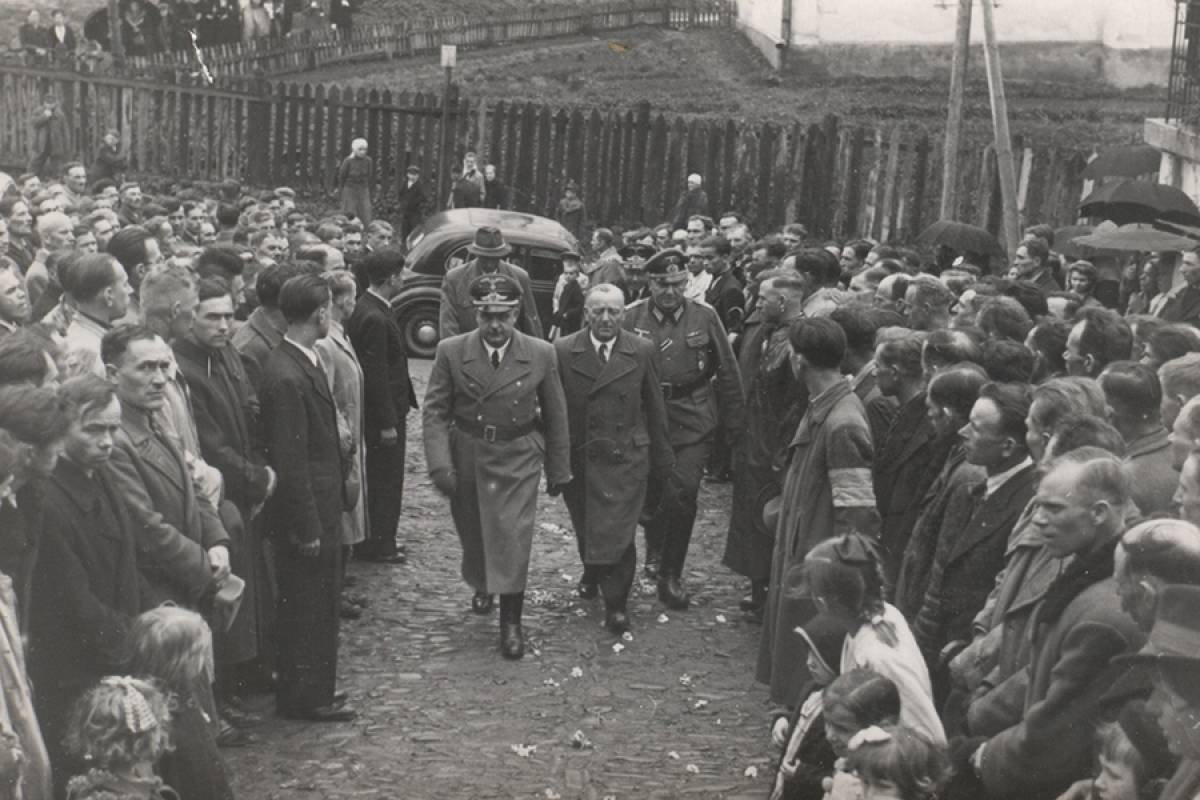Really?
Why, only yesterday, the Canadian Prime Minister and his minions gave a standing ovation to a veteran of the SS Hardly something the veteran of the Canadian Armed Forces would find palatable on any level.
The Waffen-SS Division "Galicia" was a Ukrainian military unit within the Waffen-SS, a combat branch of the SS during World War II.
It was formed in 1943, primarily consisting of Ukrainian volunteers who were motivated by a desire to fight against the Soviet Union, which had occupied parts of Ukraine.
The division was named after the historical region of Galicia, which at the time was divided between Poland and the Soviet Union.
Things that were unthinkable have become commonplace. And all seemingly encouraged as our governments sing in loud voice " Go harder! "
They are actively creating wedges and divisions.

The Waffen-SS Division "Galicia" was a Ukrainian military unit within the Waffen-SS, a combat branch of the SS during World War II. It was formed in 1943, primarily consisting of Ukrainian volunteers who were motivated by a desire to fight against the Soviet Union, which had occupied parts of Ukraine. The division was named after the historical region of Galicia, which at the time was divided between Poland and the Soviet Union.
The division was officially established in 1943 and initially included volunteers from the region of Galicia, which was under German control after the invasion of the Soviet Union in 1941. Many of the volunteers had anti-Soviet sentiments and saw the Germans as potential allies in their struggle against Soviet rule. The division was primarily made up of ethnic Ukrainians, although there were also some volunteers from other nationalities, including Poles and Belarusians. It was organised along the lines of other Waffen-SS divisions and received training and equipment from the Germans.

Photo from 1943 marking the recruitment of Ukrainian volunteers to Galacian Waffen SS Division.
"Galicia" saw combat on the Eastern Front, where it fought against Soviet forces. It was involved in various battles and operations, including the defense of the Tarnopol region in Ukraine and later engagements in Slovakia and Austria as the war progressed. The division's association with the Waffen-SS has been a subject of controversy and debate. While some members of "Galicia" may have genuinely sought to combat Soviet oppression, the Waffen-SS as a whole was responsible for numerous war crimes and atrocities during World War II. As a result, the division's history remains a topic of discussion and disagreement.
After World War II, some members of the division faced repercussions for their association with the Waffen-SS. The division's history has continued to be a point of contention in Ukraine, where it has been commemorated by some as a symbol of resistance against Soviet rule, while others view it with suspicion due to its collaboration with Nazi Germany.
Which, of course, beggars the question: Why would Canada's parliament give a standing ovation to such a person and such a divisive military unit?
After all, the Waffen SS were hardly the sort of chaps you would invite around for dinner and a friendly game of cards.
The Waffen-SS, also known simply as the SS, was the combat branch of the Schutzstaffel (SS), a paramilitary organisation in Nazi Germany. It was distinct from the Allgemeine SS, which primarily handled political and administrative functions. The Waffen-SS played a significant role in World War II and is known for its combat units, which were notorious for their role in war crimes and atrocities.
It was officially established in 1940, although it had its roots in earlier paramilitary organisations within the Nazi Party. Heinrich Himmler, the head of the SS, played a central role in its development and expansion. initially recruited primarily from German citizens, but it later expanded to include volunteers and conscripts from occupied territories and other countries. It was ethnically diverse, with units composed of Germans as well as volunteers from various European nations. Some of the more famous Waffen-SS divisions included the SS Panzer Divisions and the SS Totenkopf Division.
The Waffen-SS was deeply ideologically committed to Nazi principles, including racial purity and the superiority of the "Aryan race." Members of the Waffen-SS were indoctrinated with Nazi ideology and were expected to be loyal to Adolf Hitler and the Nazi Party.

The 14th Grenadier Division of the Waffen SS "Galizien" is sworn in. In the foreground, soldiers taking the oath and giving the Nazi salute.
The units fought on multiple fronts during World War II, including the Eastern Front against the Soviet Union, the Western Front against the Allies, and other theatres of war. Some divisions gained a reputation for being highly effective and tenacious in battle. They were responsible for numerous war crimes and atrocities during World War II, including the massacre of civilians, prisoners of war, and members of resistance movements. Notably, the Waffen-SS was involved in the Holocaust, with certain units participating in mass shootings and the operation of concentration and extermination camps.
Many high-ranking members of the Waffen-SS were prosecuted for war crimes and crimes against humanity during the Nuremberg Trials and subsequent trials. Some received severe penalties, including death sentences.
People are divided over the Ukraine war.
So why would the Canadian Prime Minister plunge a knife into the wounds of Canadian Veterans who fought this ghastly foe called Nazism and give a standing ovation?
Why?
We are increasingly being pulled into division and being expected to accept the unacceptable.
Divided over migration, Border control. Sexual content in school curriculums and school libraries.
In Australia, we have this farcical " Voice " referendum which seeks to enshrine racial division into our constitution. America is being killed by mass invasion across its southern border.
New Zealand and South Africa have already seen firsthand the aftermath of divisive politics.
But I have to hand it to Trudeau: Applauding a Nazi in parliament has to take first prize.
Somehow, I think I prefer this.Now, I could give this a standing ovation.
BLOG COMMENTS POWERED BY DISQUS


